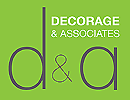Creating the right atmosphere is an important part of office design. It can set the tone for a positive work environment that impacts your company’s efficiency, productivity, morale and overall team attitude. A well-designed office that promotes the organization’s well-being can also send a positive message to clients and customers. In this article, we discuss why office design is important, how to design an office and then offer tips to help you create a space that’s functional and appealing.
1. Assess space and needs
Before you plan your new office design, analyze how much space you have and the best ways to use it. Determine the basic elements of your workplace dynamics, such as how much time employees spend at their desks, in meeting rooms and at other spaces within the office, then consider how much space each department needs. Optimizing the way you use your office space may reveal that you need less space than you initially thought, which can save you money.
Ask for employee feedback when deciding on how to use the available space. Because they spend their workday in the office, they may know how the space could be improved, what they need to be more productive and what affects their productivity. You also need to use employee feedback to estimate future growth, as your office space should have the potential to accommodate your goals.
2. Create a design brief
Once you know your needs and the space you have at your disposal, you need to write your design brief. It can include elements like:
What your goals and needs are
What your vision is for the new office design
How the design needs to align itself with your brand values
3. Choose the right people
You can either coordinate the entire office redesign project yourself or appoint another person in the office to do it. Either way, you need to set up a system where decisions can be made quickly, without a constant need for approval from upper management. Once the project leader is set, it’s time to choose a professional office designer. Some of the main criteria when choosing an office design professional or company are:
Previous work: You can ask them to provide a list of previous projects along with pictures or video footage.
Specialty: Choosing a designer who specializes in office space can save you time and money, as they’re likely to operate more efficiently than a generalist designer.
Reputation: Choose a designer with a verifiable history of having satisfied customers.
4. Set your budget
Before deciding on particular elements of office design, you need to set a clear budget for the entire operation. You should work with your designer to calculate an estimate, and then adjust your decisions based on the difference between the estimate and your available budget.
5. Start planning the look
The first part of the actual office design should usually be when you and your designer decide on how the office is going to look. This process can also involve other employees, as their feedback may be relevant. Some things you can do to find the right visual elements for your office are:
Have a meeting with the entire staff and ask them to come up with creative ideas
Browse online for office design ideas and select various elements
Ask your designer to create concept drawings to see how your office design would look
6. Create the space plan
After determining your office’s look, it’s time to decide on how to maximize the use of your available space. There are certain accommodation and safety standards that need to be met, so any decision regarding space needs to be made with them in mind. Use your space and needs assessment to create an office layout that minimizes wasted time and maximizes efficiency.
7. Decorate the office
Finally, once the office plan is complete, you need to fill your office with elements like furniture, carpet, storage spaces, flooring, wall paint and any other elements necessary for an office environment. Make sure the choices are not only stylish but also highly functional. As with most steps, feedback from the people who would then use that space can be very beneficial in the design process.
Office design tips
Consider these tips when designing your office:
Improve the lighting. Providing your employees with proper lighting is one of the most cost-effective ways of boosting productivity
Reduce unwanted noise. Noise typically affects productivity so, when designing an office, make sure that sound elements like street noises, the sound made by various machinery or simply the sound of employees chatting or speaking on the phone don’t disturb other employees. You can avoid most of these issues with insulation and a well-planned office layout.
Add natural elements. Although a workspace should primarily be designed for functionality, adding natural elements can improve your employees’ morale and productivity. Office plants or an office aquarium can add a natural element to an office.

